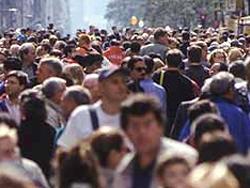Consumer Sentiment Rose 1.0% to 81.2 in Early October
Ann Arbor, MI, October 16, 2020-Consumer sentiment rose 1.0% to 81.2 in early October, according to preliminary results from the University of Michigan Survey of Consumers.
This represents a 15% decline year over year.
“Slowing employment growth, the resurgence in covid-19 infections, and the absence of additional federal relief payments prompted consumers to become more concerned about the current economic conditions,” says Survey of Consumers chief economist Richard Curtin. “Those concerns were largely offset by continued small gains in economic prospects for the year ahead. The Current Conditions Index recorded its second small reversal, the first being in June, but even at its best, it has never come close to its December peak, being still down by 26.5%. The Expectations Index, despite the recent gain, is still down by 14.4% from its February peak. How much has the presidential electioneering influenced this twist in consumer sentiment? Consumers were not asked whom they will or had voted for or their preference, but who they expected to win the election to determine the election's potential influence on economic expectations. Among all consumers, Biden's advantage in early October grew to 7 from 1 percentage point in the July to September surveys. While self-identified Democrats and Republicans heavily favored the candidate from their own party, that proportion grew by 8 points among Democrats and shrunk by 5 percentage points among Republicans. Most elections are decided by those who are non-aligned with either party; the views of Independents remained unchanged and nearly equal, giving Trump a slight advantage of 2 or 3 points. When the difference in the Expectations Index was calculated by party identification, Trump still held an advantage over Biden with some interesting twists: Trump's advantage on the Expectations Index greatly narrowed among Republicans (from 31.1 in July to September to 13.9 in October) and only a slight narrowing among Democrats (from 4.0 to 1.6), but it widened among Independents (from 20.9 to 24.4).”
